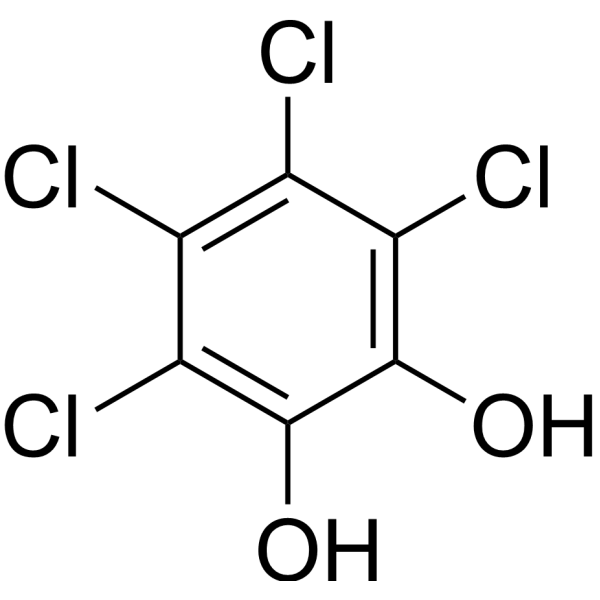
Tetrachlorocatechol
CAS No. 1198-55-6
Tetrachlorocatechol( —— )
Catalog No. M28190 CAS No. 1198-55-6
Tetrachlorocatechol is a metabolite of pentachlorophenol. Tetrachlorocatechol is one of the most toxic chlorinated catechol produced by the chlorobleaching of pulp and frequently found in the kraft pulp mill effluents.
Purity : >98% (HPLC)
 COA
COA
 Datasheet
Datasheet
 HNMR
HNMR
 HPLC
HPLC
 MSDS
MSDS
 Handing Instructions
Handing Instructions
| Size | Price / USD | Stock | Quantity |
| 200MG | 26 | In Stock |


|
| 500MG | Get Quote | In Stock |


|
| 1G | Get Quote | In Stock |


|
Biological Information
-
Product NameTetrachlorocatechol
-
NoteResearch use only, not for human use.
-
Brief DescriptionTetrachlorocatechol is a metabolite of pentachlorophenol. Tetrachlorocatechol is one of the most toxic chlorinated catechol produced by the chlorobleaching of pulp and frequently found in the kraft pulp mill effluents.
-
DescriptionTetrachlorocatechol is a metabolite of pentachlorophenol. Tetrachlorocatechol is one of the most toxic chlorinated catechol produced by the chlorobleaching of pulp and frequently found in the kraft pulp mill effluents.
-
In Vitro——
-
In Vivo——
-
Synonyms——
-
PathwayOthers
-
TargetOther Targets
-
RecptorWnt/β-catenin
-
Research Area——
-
Indication——
Chemical Information
-
CAS Number1198-55-6
-
Formula Weight247.88
-
Molecular FormulaC6H2Cl4O2
-
Purity>98% (HPLC)
-
SolubilityIn Vitro:?DMSO : 100 mg/mL (403.40 mM)
-
SMILESOc1c(O)c(Cl)c(Cl)c(Cl)c1Cl
-
Chemical Name——
Shipping & Storage Information
-
Storage(-20℃)
-
ShippingWith Ice Pack
-
Stability≥ 2 years
Reference
1.Wang J, et al. Identification of DK419, a potent inhibitor of Wnt/β-catenin signaling and colorectal cancer growth. Bioorg Med Chem. 2018 Nov 1;26(20):5435-5442.
molnova catalog



related products
-
(S,R,S)-AHPC-PEG2-N3
(S,R,S)-AHPC-PEG2-N3 is a synthesized E3 ligase ligand-linker conjugate containing a (S,R,S)-AHPC based VHL ligand and 2 unit PEG linker.
-
2-Deoxy-D-glucose
2-Deoxy-D-glucose, an analog of glucose, is a glycolytic inhibitor with antiviral activity.
-
4-CMTB
4-CMTB is a selective agonist of FFA2 and GPR43.It also is a positive allosteric modulator (pEC50=6.38).



 Cart
Cart
 sales@molnova.com
sales@molnova.com


